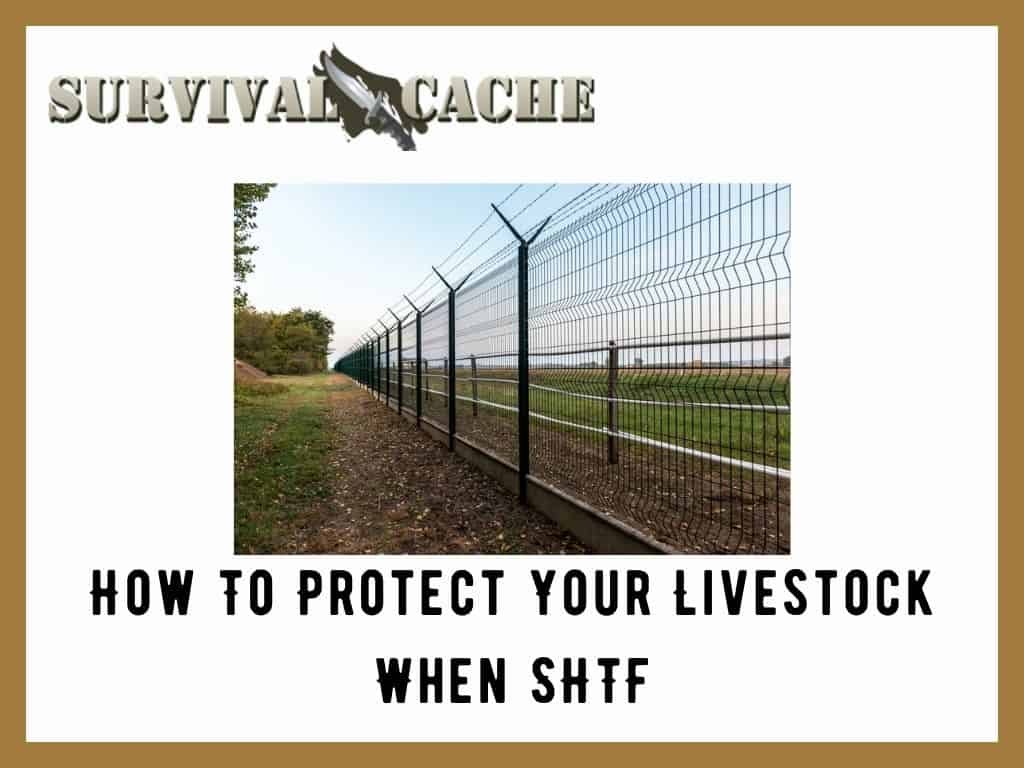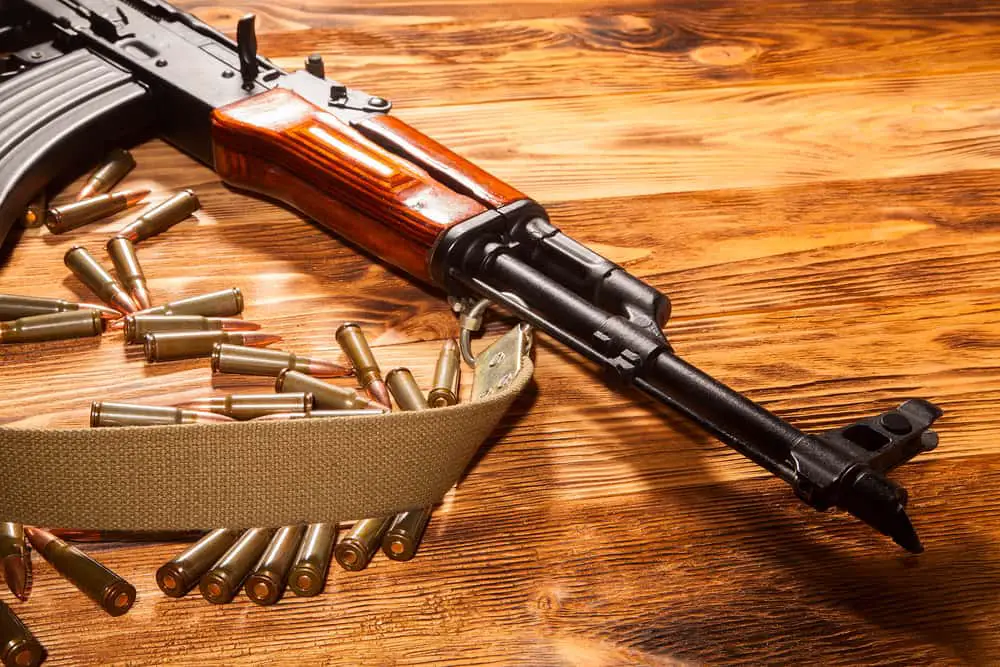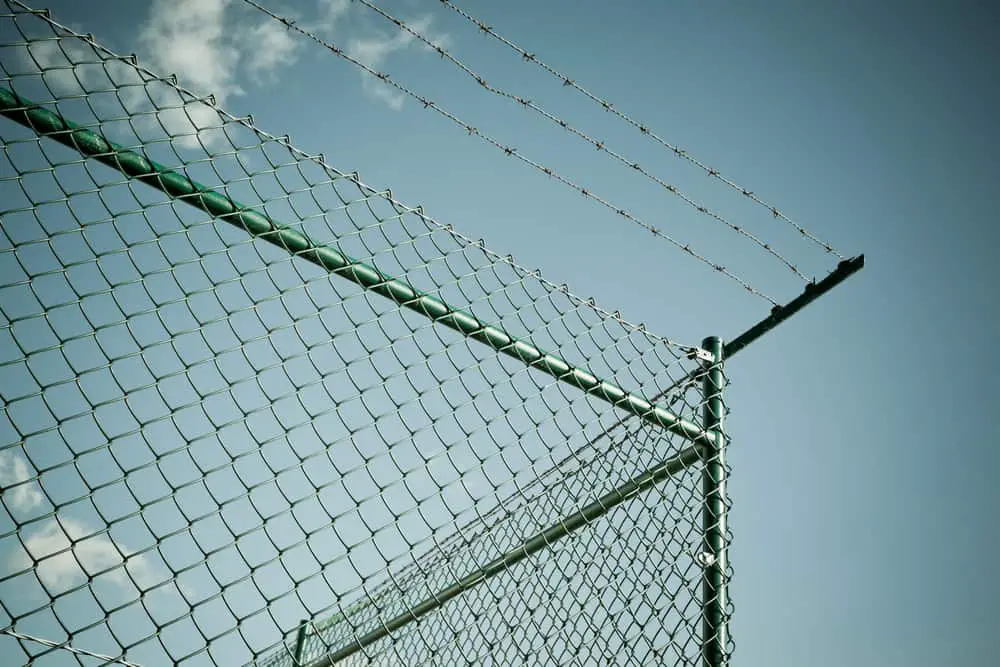If you are a prepper, own a homestead, or a farm, then it’s critical to know what you can do before major SHTF situations occur to protect your livestock.

These types of disasters can vary anywhere from hurricanes, solar flares, or nuclear war among the several other scenarios where SHTF.
There is no certainty in any of these situations, as no one can predict which one is most likely to occur.
This calls for preparedness for most scenarios; this way; you’ll be prepared, no matter the disaster; this is important.
You may also consider purchasing a solar-powered generator to power the on-grid methods listed below. Let’s dive into it.
SKIP AHEAD
Top 5 Off-Grid Protection Methods
Firearms
If you’re looking to protect your livestock after SHTF, firearms are certainly a great option to consider.

I think this goes without saying, but guns simply have no competition as to the amount of protection offered. Check here for the best firearms to have if SHTF.
If you have livestock, you likely have a pasture or some type of open area, so a rifle or other long-range weapon with a scope would perhaps work best; this way, you can keep a close watch on the property of the surrounding area.
It would also be a good idea to have a short-range weapon like a shotgun or pistol. Silencers, if added, could lessen your chances of being discovered by individuals far away if you have to fire a shot as well.
Guard Dogs
There are many types of guard dogs to choose from, and they can make people with bad intentions think twice about stepping foot on your property.
Nonetheless, I would recommend larger dogs, such as the Caucasian Shepherd or the Kangal. These dogs are the best-known guardians in the world that are in the domestic dog family.
The Caucasian Shepherd is the most massive, most robust dog on earth and is the only dog confirmed to kill a Grey Wolf and takedown Bears.
They are well known to be very protective of their family and land but must be trained well. These are not dogs for novices.
Dobermans are also outstanding but may not adequately protect an entire farm of animals like cows, goats, or chickens.
Trenches
This is an unusual tactic because it often requires a little labor, but it’s an excellent way to keep your livestock from getting stolen.
Trenches, if dug deep and wide enough, can prevent the livestock from not only escaping but being stolen as well. Yes, bridges can be created, but this at least buys you time.
After SHTF, there will likely be many scavengers branching out into the woodlands, and if they discover your property and see animals, which can be used for food or sales, they could very well feel inclined to take them from you.
This is why a trench, five feet deep, or more profound surrounding the livestock would help so significantly. It’s not a save all tactic, but it will help.
It would certainly also be a good idea to remove all fallen trees and branches from the area, so bridges are harder to build.
Fencing
Countless types of bridge designs are used by farmers to keep their livestock secure, mostly from the inside.

If you want a fence to keep your livestock safe on both sides, especially from thieves, then a wall with razor wire or barbed wire would work best.
This fence should be at least 9 feet tall, and if possible, build a double wall. This way, it’s more difficult to force entry.
You should also think about other intruders like coyotes, which can easily dig underneath the fence into the other side.
To prevent this, simply run a thick type of fence two to three feet below ground; this way, if an animal tries to dig underneath, they’ll be stopped by the barrier you placed under the main fence.
Spike Belts
These are especially great at preventing theft of livestock by stopping vehicles in their tracks, literally. These are straps that have small, sharp spikes on the upwards facing portion of the belt.
They are similar to what police officers use to stop vehicles from fleeing by causing a tire to go flat by puncturing it quickly.
It’ll undoubtedly be a little costly initially, but they will last a very long time and may save you from losing your livestock.
They may not help with many other aspects, but if they are stepped on, they will know very quickly that the property owner means business and that it’s probably a good idea to leave.
Top 5 On-Grid Protection Methods
Alarms
All of the methods above are great at securing your livestock, but what if they get breached while you are unaware?
This is where alarms come into the equation; they require power, but not much, so a solar generator would suffice to power it. Something like this would be perfect.
Any gates, fences, or shelters you have for the livestock are at risk of being breached, no matter how secure you make them.
If alarms are placed around the property, particularly on the three noted above, then you’ll be notified of any irregularities.
The alarms won’t stop the thieves, but it will let you know to do something about it. Alarms are also great if a tree falls and breaks open a fence or gate, as this may happen in a blind spot and stay unnoticed for a while.
Motion Detectors
This is almost as important, if not more useful than alarms. Any motion detected due to human or animal movements will trigger the motion detector to alert you.

These come in all types of forms, such as types that trigger a light when motion is detected or others that trigger an alarm.
These also require very little power, so a solar generator will also work just fine powering these.
They may, on occasion, pick up random animals like squirrels or birds, but if placed on the outskirts of your land, could alert you of incoming threats before they even arrive at your property.
Electric Fencing
This tactic is by far the most commonly used type of fencing in the world used to secure livestock. It works by pushing a small amount of electricity through a small gauge wire that, if touched, provides a slight shock.
Luckily, the amount of power can be adjusted by the owner, providing an even more potent punch. A trespasser can easily bypass this by simply laying a shirt over the fence.
Still, if the fence is elaborate enough with plenty of razor wire and other preventive methods, it will prove a chore to anyone who tries to cross over into your land.
They require a bit of power, but a solar generator could power it while you’re away from the property. In my opinion, as a prepper, this is a must-have if power is accessible.
Camera Systems
If you want eyes on your property at all times, camera systems are a great way to do so. Many of them can transmit data locally, which means the internet is not required to operate them.
They also run off of very little electricity, so as with the others, a solar generator will suffice. They can be placed all over the land, such as near gates, any entrances, blind spots, or near your home.
These can also be tied into the alarms and motion sensors, though many camera systems already have these features built into the software.
They’re pretty quickly set up, and if cellular service is available, they can alert you via phone notification providing live camera feedback, and in some cases, audio as well. This way, you can keep an eye out on your livestock at all times.
GPS Collars
These are excellent options to consider purchasing to add to protect your livestock. These are most commonly placed on the neck of the animal.
They are mostly used on animals like dogs or cats but are also perfect for cows, goats, and horses.
They work by using the built-in rechargeable battery to put out a signal via GPS and cellular towers, which gives the user a few options to take advantage of.
A few of these options include notifications that alert you if the animal has left a certain vicinity of the property or if the collar has been removed. These are great if you need to leave your property temporarily.
More Great Must Do Preps
Store Plenty Of Food and Water
Livestock, just like humans, require food and water to live. This is why it is essential to stock up on both food and water. After a disaster, food and water may become very hard to get your hands on.
If your livestock relies on natural resources like locally grown grasses, this could die out due to various factors depending on the particular disaster.
It’s a good idea to store at least a month’s worth of food, keeping it in an airtight container.
This feed should be recycled regularly and will be pricey to fill up, but could very well save your livestock from starvation by buying you time while you find other ways to feed them after SHTF.
Consider Building A Shelter
Livestock cannot use masks, suits, or other protective gear humans can, so shelter is just about the most vital thing to do that can help protect them.
A few great ideas in terms of shelters are either trenches easily accessible to the livestock with something placed on top, such as trees and leaves to act as a roof, boarding, or tarps.
This will help stop the fallout from hitting the animals directly. You could also consider above-ground options, such as the typical barn or something alike.
This can help shield them from the effects of most SHTF scenarios but may not prevent all scenarios from proving dangerous.
Build A First Aid Kit
The most vital addition for humanity to any preparedness cache is a first aid kit. This also holds for livestock as well. However, the contents of the first aid kit may differ depending upon which animals you have.
A great starting point is to have plenty of antibiotics, syringes, essential surgical tools, and sterilization fluids like alcohol.
Vets will very unlikely be unavailable if SHTF, so having these items are critical if you want your livestock to thrive long-term.
I think it would also be an excellent idea to buy a few books to get educated on ways to treat your livestock effectively; this way, you are prepared if a medical emergency occurs.
Open Questions
Which Scenarios Are Most Likely To Occur?
As mentioned previously, no one knows which disaster is most likely to happen. However, it’s acceptable to debate.
If we look at our history, I’d say the following three are the most likely: Pandemic (airborne ebola type, etc.), EMP, or a major earthquake.
This does not mean other disasters like Nuclear War, Mega Volcanic Eruptions, or Solar Flares are impossible, though. This is why preparedness in all areas is critical.
How Can I Protect Myself If SHTF?
As mentioned before, no one knows which disaster could happen next. This is why preparedness in all areas of disaster is critical for sustaining life.
To prepare for this, the basics covered should be long-term food storage, preferably canned or dried food, water, a bug out bag, and first aid.
You should aim for a minimum of three months if possible, but one month should be enough for most disasters. Check out this article for tips on getting started.
Are These Methods Legal?
Most of these methods are legal in all fifty states; some of them, however, may require licensing or could be outright against the law in your state.
If you feel that any of these methods are not legal in your state, it’s a good idea to contact your city hall to find out quickly.
The spike strips, in particular, is a point of interest to ask about, and it should be noted that many states require a license to carry a firearm.
Verdict
There are quite a few tactics that can be implemented to protect your livestock if SHTF, and many of them are not expensive nor complicated to do.
I agree that guns and dogs are great protectors of livestock, which are two prevalent protection methods.
However, incoming attacks are certainly not the only thing you should be worried about, considering the previously mentioned human-made and natural disasters.
If you want to ensure the safety and security of your livestock, you’ll want to implement several tactics; this way, you are prepared for most scenarios that may come your way.
Let us know in the comments if you have any unique suggestions that would be helpful in protecting livestock as well.

